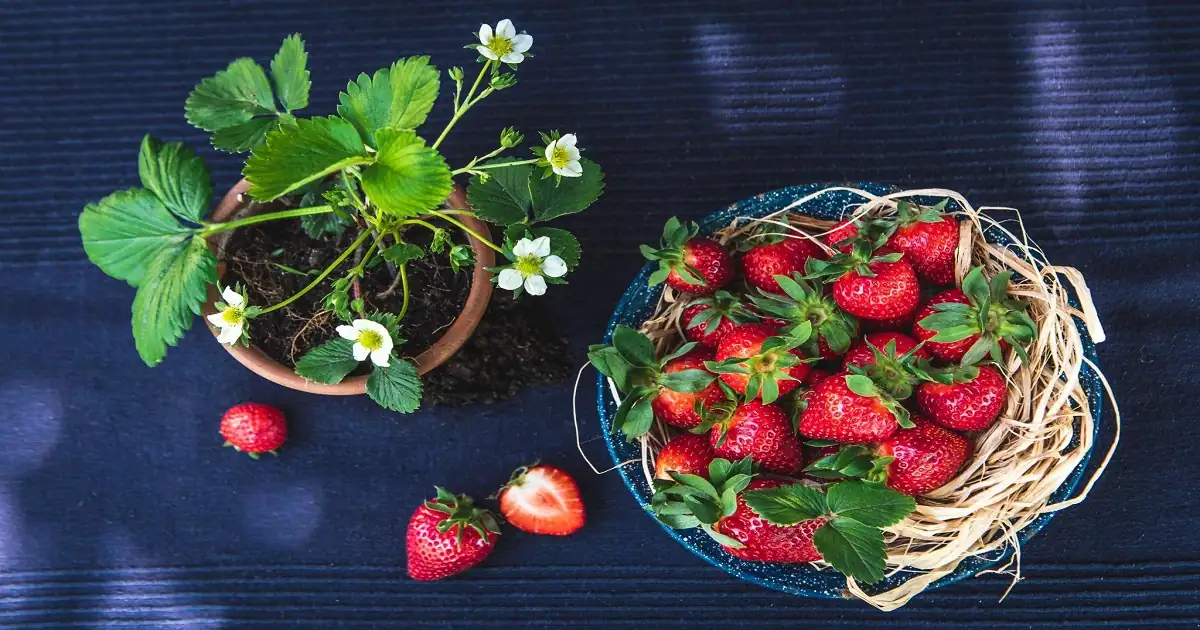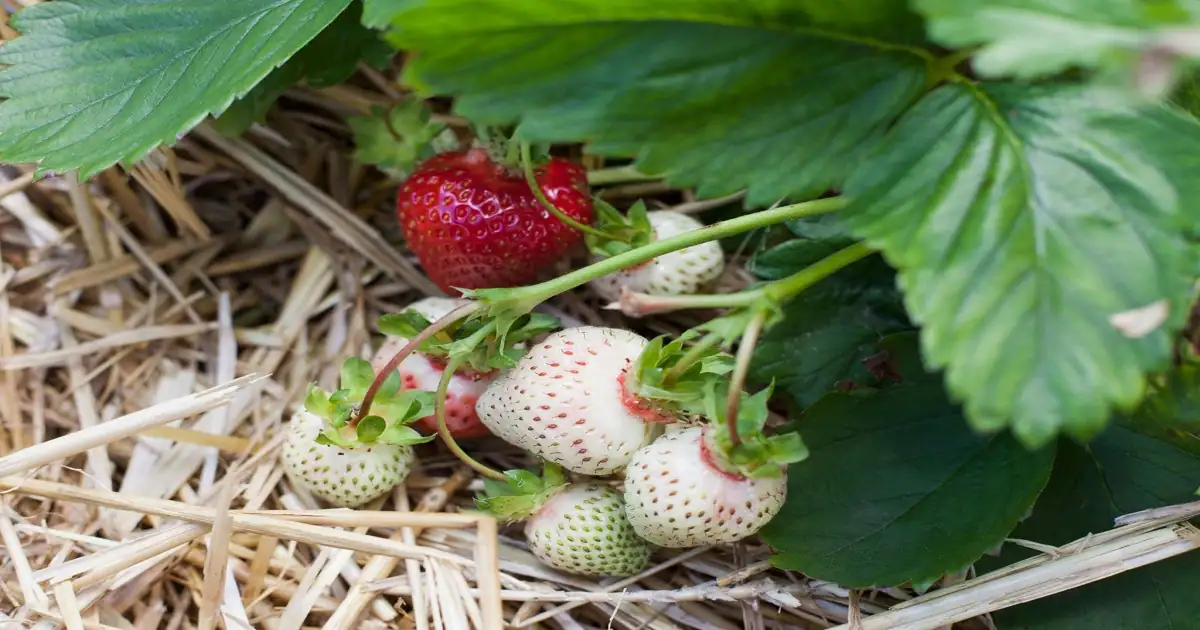Mastering the Art of Strawberry Farming; Planting, Growing, Care, and Harvesting

Do you wish to construct a strawberry farm and engage in physical labour? If you appreciate these beautiful, delicious berries, you’re in for a treat. If done correctly, strawberry growing is a difficult but rewarding endeavour that can produce a plentiful harvest. We’ll bring you through the crucial phases of planting, cultivating, tending to, and harvesting strawberries in this guide. You will own all the information and resources necessary to succeed as a strawberry farmer by the time you have finished reading this essay.
#1: Planting Strawberries

The first and most important stage in strawberry farming is planting the strawberries. What you need to know is as follows:
Choosing the Right Variety
Picking the best kind for your farm is crucial before you begin planting strawberries. Among the most well-liked kinds are:
- Chandler: A high-yield type that produces big, juicy berries that are ideal for eating right away.
- Albion: Albion is a disease-resistant cultivar that yields pleasant, medium-sized berries.
- Seascape: A hardy type that bears big, firm berries and is heat-resistant.
Preparing the Soil
It’s time to prepare the soil after selecting the appropriate variety. Here is how you do it:
- Choose a fertile, well-draining soil with a pH of 5.5 to 6.5.
- Clear the planting area of any weeds and trash.
- To increase soil fertility, incorporate organic materials such as compost or manure.
Planting the Strawberries
It’s time to plant the strawberries now that the soil has been prepped. Here is how you do it:
- Make a hole that is deep enough to fit the plant’s roots.
- Plant should be inserted into hole, making sure that the crown is level with the soil’s surface.
- Water the plant well and compact the dirt around it.
#2: Growing Strawberries

It’s time to focus on growing strawberries after you’ve planted them. Here’s what you need to know:
Watering and Fertilizing
To grow, strawberries require regular irrigation. Here is how you do it:
- Water the plants thoroughly once a week, being careful to keep the soil moist but not soggy.
- Throughout the growing season, fertilise the plants every four to six weeks with a balanced fertiliser.
Controlling Weeds and Pests
Your strawberry plants can be damaged by weeds and pests, so it’s necessary to keep them under control. Here is how you do it:
- Mulch helps retain moisture and inhibits weed development.
- Maintain a regular vigilance for parasites like slugs, spider mites, and aphids.
- Employ natural pest management strategies to get rid of pests, such as neem oil, insecticidal soap, or diatomaceous earth.
#3: Caring for Strawberries

You must give your strawberry plants the necessary care if you want to keep them strong and fruitful. What you need to aware about is as follows:
Pruning and Trimming
If you cut and trim your strawberry plants, they will stay healthy and make more fruit. What you can do is as following:
- Remove any plant leaves that are dead or have turned yellow.
- To stimulate the plant to produce more runners and fruit, pinch off the early flowers.
Protecting from Frost and Cold Temperatures
Frost and freezing temperatures can harm or kill strawberry plants and lower the quality of the fruit since they are susceptible to these conditions. Following are some tips for shielding your strawberry plants from cold and frost:
Cover the Plants
One of the simplest ways to protect your strawberry plants from frost and freezing temperatures from harming is to cover them with a blanket or piece of cloth. How you can do it is as following:
- Before the frost or cold snap, cover the plants with a blanket or sheet.
- To trap heat and keep cold air out, make sure the cover reaches the ground on all sides.
- To keep the cover from blowing away, anchor it with pegs or weights.
Use Row Covers
Row coverings offer a better long-lasting defence against frost and freezing temperatures for your strawberry plants. How to use them is as follows:
- Before the frost or cold snap, cover the plants with row covers.
- To stop cold air from penetrating, ensure that the covers are firmly secured to the ground.
- In order to provide the plants access to air and sunshine during the day, remove the coverings.
Use Mulch
Your strawberry plants will be better protected from frost and freezing weather if you use mulch since it insulates the soil and keeps it warm. How to use it is as follows:
- Put a layer of mulch over the plant bases before the frost or cold snap.
- To ensure appropriate insulation, make sure the mulch is at least 2 inches deep.
- In order to encourage plant growth, remove the mulch in the spring.
Water the Plants
By increasing the temperature around the plants, watering your strawberry plants before a frost or cold snap can help protect them. This is how you do it:
- Before the frost or cold snap, thoroughly water the plants.
- To prevent root rot, make sure the soil is wet but not soggy.
- Cover the plants with a blanket or piece of cloth to keep the heat in and keep the cold air out.
#4: Harvesting Strawberries

It’s now time to harvest your strawberry plants after all your hard work planting, nurturing, and tending to them. What you need to know is as follows:
When to Harvest
In order to obtain strawberries with the highest flavour and quality, you must know when to harvest them. Here is how you do it:
- Delay eating the berries until they are fully ripe and vivid red in colour.
- Carefully remove the berries off the plant while being mindful not to harm the fruit or the plant.
How to Harvest
The secret to successful strawberry harvesting is delicate handling. What you should do is as follow:
- Cut the stem immediately above the berry with a knife or sharp scissors.
- Use gentle handling on the berries to avoid bruising and damage.
Storing and Preserving
If you can’t consume all of your strawberries right once, you must carefully store them to preserve their freshness. Here is how you do it:
- Fresh strawberries can be kept in the fridge for up to three days.
- To freeze strawberries, arrange them in a single layer on a baking sheet after carefully cleaning and drying them. Transfer the frozen items to a freezer bag or an airtight container.
Conclusion
Growing strawberries is a labor-intensive yet gratifying activity that can result in a plentiful harvest of succulent fruit. You may successfully plant, cultivate, care for, and harvest your own strawberries by following the instructions provided in this tutorial. To maintain your plants healthy and fruitful, don’t forget to select the right species, prepare the soil properly, water and fertilise them regularly, control weeds and pests, and prune and trim them. You may harvest an abundant and tasty crop of fresh strawberries from your own farm with the correct care and attention.
FAQs
Q: How long does it take for strawberries to grow from planting to harvesting?
A: It takes around four to six weeks for strawberry plants to start producing fruit after planting. You can start harvesting the berries around four to six weeks after the plants start blooming.
Q: How many times can you harvest strawberries in a season?
A: You can usually harvest strawberries two to three times per season, depending on the variety and growing conditions.
Q: How do you know when to water your strawberry plants?
A: You should water your strawberry plants deeply once a week, or when the soil starts to feel dry to the touch.
